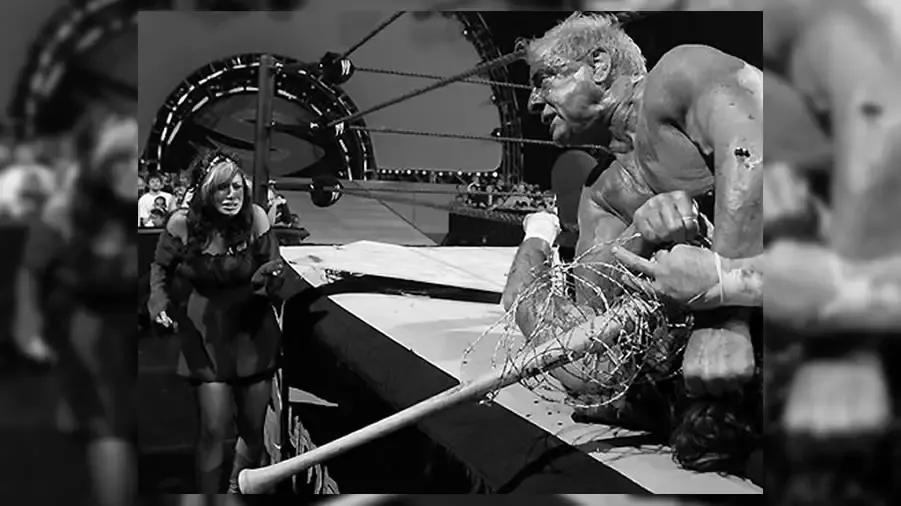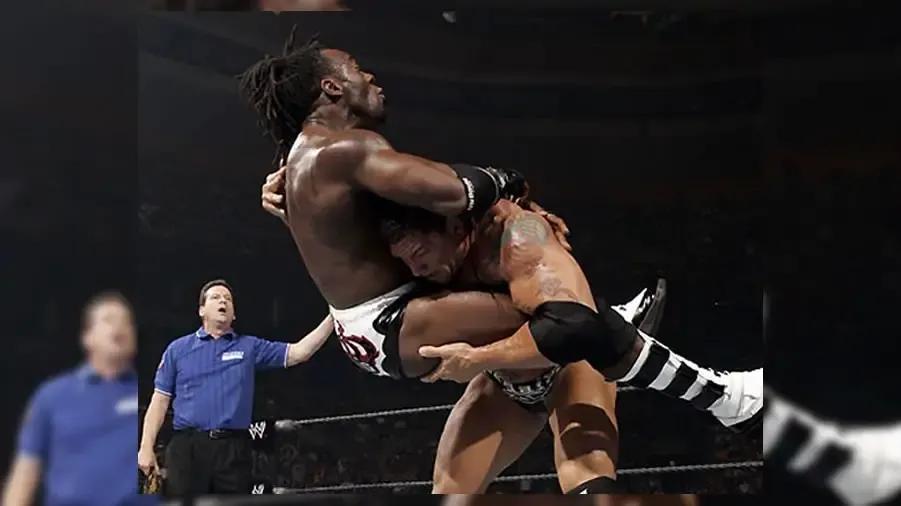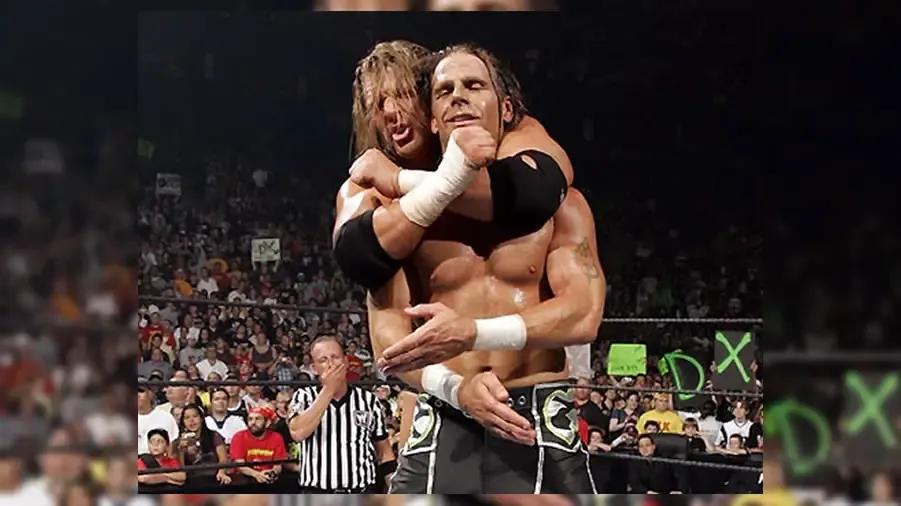10 Things We Learned From WWE SummerSlam 2006
Hulk Hogan's last WWE match...

Aug 8, 2018
The year 2006 took place more than a decade ago, and with hindsight, we come to realize just how truly bizarre WWE was in that year. While the likes of John Cena, Batista, Randy Orton, and Edge properly represented the modern era of
Superstar
, there was also all too much star-gazing into the galaxies of yesteryear. The infiltration of nostalgia was in full swing, and while it was fun to see a mash-up of different eras, there didn't seem to be so much room for the current crop to properly breathe.
When Hulk Hogan, Ric Flair, Mick Foley, DX, and The McMahons are all wrestling high-profile matches on a pay-per-view in 2006, something seems slightly amiss. Add to it the fact that WWE had now bloated to three brands thanks to the advent of WWECW, and you have an old promotional concept getting squeezed into the fold, although that flavour would be dulled quickly enough.
As far as SummerSlam 2006 goes, there have been worse SummerSlams, but this certainly is far from being one of the best. Somewhere along the way, when WWE was jam-packing one of their Big Four events with technicolour and skyrockets, quality assurance went out the window. With a couple exceptions, there wasn't much substance behind the propped-up backdrop.
The Boston area has had it pretty great this millennium when it comes to sports: three World Series wins for the Red Sox, five Super Bowls for the Patriots, and NBA Championship and Stanley Cup wins for the Celtics and Bruins, respectively. Not even Tom Brady's drop of a wide-open pass in Super Bowl LII can diminish the joy felt by regions in the 2000s.
Boston was the location of SummerSlam 2006, and with it came a unique distinction - Boston became the first city to host each of the Big Five pay-per-views. In succession, Survivor Series 1993 (at the old Boston Garden), WrestleMania XIV, King of the Ring 2000, and Royal Rumble 2003 preceded this SummerSlam. The only other city to manage this feat was Philadelphia, who pulled it off later in the year by hosting Survivor Series 2006. Cheer up, Philly - at least Nick Foles caught *his* pass.

The Great Khali emerged onto the WWE scene in the spring of 2006, and his assault of The Undertaker gave longtime fans unwanted flashbacks to the days of Giant Gonzalez. It was the same Undertaker vs. mammoth beast trope that had played out in the mid-nineties, and the summer of 2006 saw that old concept dragged out of the mothballs once more.
Originally, the two monsters were set to do battle at SummerSlam in a Last Man Standing Match, only for WWE to pull the bout. Owed to Khali working through two bad knees, as well as the company's general displeasure with his performances, the match instead took place on the SmackDown that preceded SummerSlam with Undertaker emphatically winning. Kind of a shame, because the match was actually among one of Khali's better showings.

Kurt Angle would be released from WWE just five days after SummerSlam, and would find himself in TNA one month later as one of their biggest acquisitions to date. He wrestled what was then his last match for the company the week before SummerSlam, working with Rob Van Dam on a house show in New York state.
If Angle had his way, he would've been on the SummerSlam card. Angle reportedly lobbied to WWE officials to add him to the ECW Championship bout that pitted Big Show against Sabu, only to be turned down. Angle has long been known for his competitive spirit, and his willingness to work through injuries. For what it's worth, Angle apparently had sustained a groin injury in the match with Van Dam, but if WWE had opened the door for him, he probably would've worked SummerSlam anyway.

The ECW Championship bout between Big Show and Sabu wasn't anything special, aside from fulfilling the hardcore elements required to be a WWE-minded version of what ECW represented. Having Show as champion didn't exactly boost fan sentiment toward the ECW rebirth, as WWE's fingerprints were too smudged across the company that a large segment of the audience still fondly loved.
Interestingly, Sabu is the only ECW original to have taken part in an ECW Title bout at one of the Big Four pay-per-views. Later ECW Championship matches at said events would include a few talents that ECW fans would've enjoyed (CM Punk, Matt Hardy, Christian), while others would've likely been scorned (Test, Kane, Mark Henry). While the ECW brand would have its moments before its 2010 demise, it was ECW in branding only.

After Summerslam 2005 did an insane 650,000 buys on pay-per-view (as noted previously, the second-most bought SummerSlam ever behind 1998), Hogan was given another go-around at WWE's August extravaganza. This time, he would be paired with 26-year-old Randy Orton, stemming from an angle filmed on Saturday Night's Main Event the previous month.
Hogan, however, wasn't working without pain. The Hulkster would miss the go-home Raw with a partially-torn meniscus, which reportedly was caused by simply standing up off of the sofa in his home. Well, to be fair, Hogan was 53 years old, and the legs of a taller man that spent nearly three decades as a wrestler are more susceptible to breakdown. Hogan did make the SummerSlam date, and the match was fine, though some would argue that Orton flopping around a la HBK may have boosted it.

Twenty-one years earlier, on the broadcast premiere of Saturday Night's Main Event, Hogan defended the WWE Championship against "Cowboy" Bob Orton. The fact that Hogan would one day be wrestling a featured pay-per-view match against Cowboy's then-five-year-old son Randy has to make Hulk feel a little older than perhaps he already does.
The match is, to date, Hogan's last inside a WWE ring. Plans to have Hogan compete at WrestleMania 23 the following year fell by the wayside, and he would instead focus any and all in-ring focus on personal tours (the Hulkamania tour of Australia) and occasionally donning the tights in a TNA ring. As of now, Hogan's last match ever took place in January 2012, competing in six-man tag action during TNA's tour of the United Kingdom. But I wouldn't rule out one last foray in a WWE ring, for posterity's sake.

The two best matches of the 2006 SummerSlam were undoubtedly John Cena's failed bid to win Edge's WWE Championship, and Mick Foley's disturbingly-brutal I Quit Match with fellow legend Ric Flair. According to Foley himself, earlier plans for the show would've cancelled out both matches, and instead pitted him against the Doctor of Thuganomics.
Yes, a post-heel turn Foley would've been matched up with Cena, presumably to do for Big Match John what he'd already done for Orton and Edge at recent WrestleManias. The reason for the change of plans was that Vince didn't want to end the Foley/Flair feud too early, thinking there was still plenty of juice left in their fiction-meets-reality
worked animosity
toward each other. And juice there was, as Flair and Foley bled all over TD Garden in a spectacle that's sadly rarely mentioned.

Ric Flair is a rather interesting case in the wrestling business, as he's one of the absolute greatest of all time, but certainly, he's the best ever in terms of wrestlers whose best days came outside WWE. Despite his fruitful associations with WWE at times, it's still hard to ever label him a WWE guy.
Case in point: it may be a bit hard to believe, but Flair's match with Mick Foley at the 2006 SummerSlam marked only his second match at WWE's annual August event. The other came four years earlier when he wrestled Chris Jericho in the second match on that night. Not even in his 1991-93 run did he have a SummerSlam match (serving only to interfere at 1992's show), while his second tenure with the company would see him used mostly as a manager for Evolution members. But hey, 2-0 at SummerSlam is 2-0.

The World Heavyweight Title match saw King Booker defend the gold against Batista, and it was a rather flat, disappointing match, even before the dreadful non-finish. When you put the words "King Booker", "Batista", and "SummerSlam" in the same sentence, the match two had in Boston is nothing compared to what transpired between them three months earlier.
During the production of the SummerSlam commercial in May 2006, Batista and Booker had gotten into a fistfight. Some wrestlers had taken umbrage with comments Batista made about SmackDown-brand wrestlers more than a year earlier, and the ugliness had not subsided come the shoot. When Batista reportedly only greeted some of his Raw contemporaries at the shoot, Booker angrily called him out, and the two agreed to settle their differences mano-a-mano. Most sources claim that both men were scuffed up from the fight (Booker had noticeable eye redness on the next SmackDown), but the consensus is that Booker got the better of Big Dave.

When SummerSlam 2005 clocked in with 650,000 buys, you just knew that the company would be looking to employ Hogan for special matches down the line. Putting him on a show that would also see reformed DX in tag team action, as well as Ric Flair vs. Mick Foley, gave off something of a supercard vibe. So how did it do, sales-wise?
The bad news is that SummerSlam 2006 didn't quite match 2005, scoring 541,000 buys in all, which was down almost 17 per cent from one year earlier. And to be fair, Hogan/Orton was no Hogan/Michaels, in execution or hype. On the upside, the show was still in the same neighbourhood as the 2000-02 SummerSlams, and dwarfed the diminished numbers of the 2003 and 2004 shows. Overall, it's the seventh most-purchased SummerSlam in history, and that in itself is rather impressive.